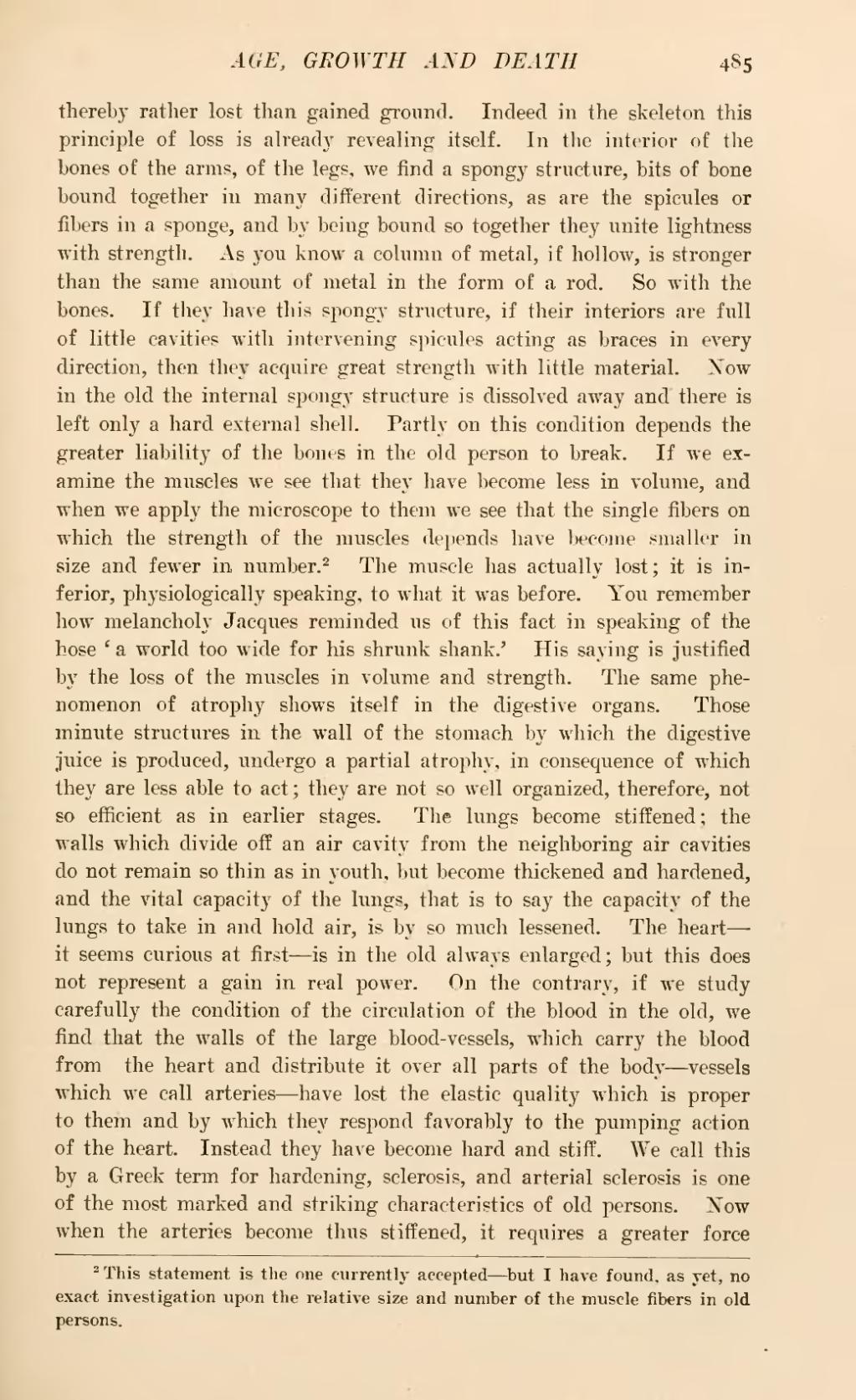thereby rather lost than gained ground. Indeed in the skeleton this principle of loss is already revealing itself. In the interior of the bones of the arms, of the legs, we find a spongy structure, bits of bone bound together in many different directions, as are the spicules or fibers in a sponge, and by being bound so together they unite lightness with strength. As you know a column of metal, if hollow, is stronger than the same amount of metal in the form of a rod. So with the bones. If they have this spongy structure, if their interiors are full of little cavities with intervening spicules acting as braces in every direction, then they acquire great strength with little material. Now in the old the internal spongy structure is dissolved away and there is left only a hard external shell. Partly on this condition depends the greater liability of the bones in the old person to break. If we examine the muscles we see that they have become less in volume, and when we apply the microscope to them we see that the single fibers on which the strength of the muscles depends have become smaller in size and fewer in number.[1] The muscle has actually lost; it is inferior, physiologically speaking, to what it was before. You remember how melancholy Jacques reminded us of this fact in speaking of the hose 'a world too wide for his shrunk shank.' His saying is justified by the loss of the muscles in volume and strength. The same phenomenon of atrophy shows itself in the digestive organs. Those minute structures in the wall of the stomach by which the digestive juice is produced, undergo a partial atrophy, in consequence of which they are less able to act; they are not so well organized, therefore, not so efficient as in earlier stages. The lungs become stiffened; the walls which divide off an air cavity from the neighboring air cavities do not remain so thin as in youth, but become thickened and hardened, and the vital capacity of the lungs, that is to say the capacity of the lungs to take in and hold air, is by so much lessened. The heart— it seems curious at first—is in the old always enlarged; but this does not represent a gain in real power. On the contrary, if we study carefully the condition of the circulation of the blood in the old, we find that the walls of the large blood-vessels, which carry the blood from the heart and distribute it over all parts of the body—vessels which we call arteries—have lost the elastic quality which is proper to them and by which they respond favorably to the pumping action of the heart. Instead they have become hard and stiff. We call this by a Greek term for hardening, sclerosis, and arterial sclerosis is one of the most marked and striking characteristics of old persons. Now when the arteries become thus stiffened, it requires a greater force
- ↑ This statement is the one currently accepted—but I have found, as yet, no exact investigation upon the relative size and number of the muscle fibers in old persons.
